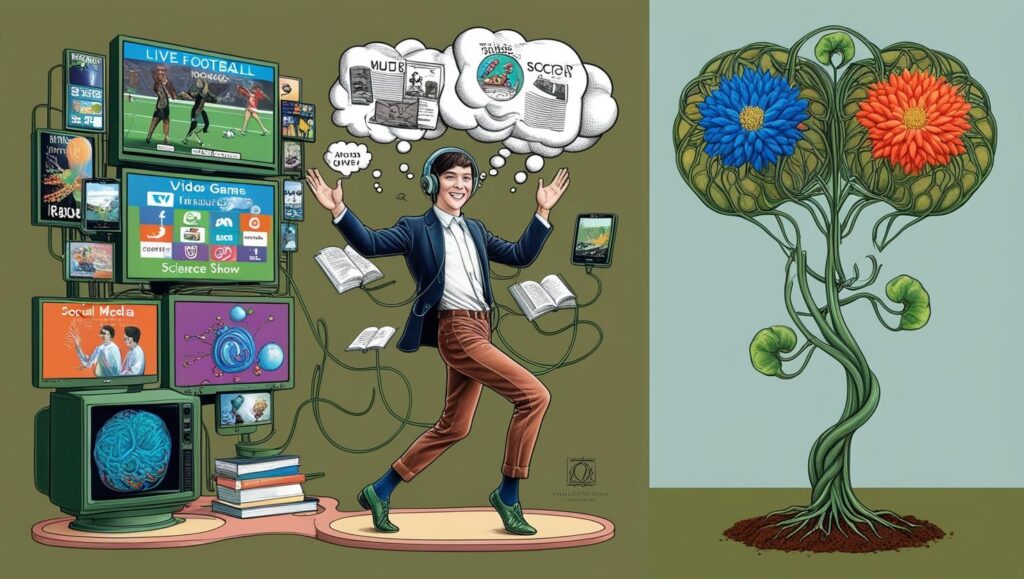
When we look at a flowering plant, it’s easy to identify its inputs and outputs. It takes in soil, fertilizer, water, air, and sunlight. In return, it produces flowers, beautifies its surroundings, and releases oxygen—a critical yet often overlooked byproduct. Though invisible, oxygen is vital to life on Earth, and plants are central to its production through photosynthesis.
This process illustrates a fundamental principle: inputs determine outputs. A plant’s health and productivity are contingent upon the quality and balance of its inputs. Without adequate sunlight or proper nutrients, the plant may fail to thrive—or die. Research in plant physiology confirms this, showing how environmental variables like light and soil composition directly influence growth (Nobel, 1991).
Humans operate by the same principle, though within a far more complex system. Like plants, we require physical inputs—food, water, oxygen—for survival. But we also process intangible inputs—information, experiences, interactions—that fuel our mental and emotional output. This dual nature is central to what makes us human.
Our brains, composed of about 86 billion neurons, continuously absorb and process inputs from the world around us. These inputs are stored as memories and knowledge, forming the basis for our ideas, emotions, and behaviors. Neuroscience has shown that this process—neuroplasticity—enables the brain to reorganize itself in response to new experiences, reinforcing some neural pathways while pruning others (Doidge, 2007). In short, what we take in shapes who we become.
So, what are the inputs that shape our thoughts? Every book we read, conversation we have, and song we hear becomes part of our mental reservoir. Cognitive science suggests our brains synthesize these diverse inputs into networks of interconnected concepts, which guide how we interpret new information and form responses.
This dynamic is especially evident in the media we consume. Repeated exposure to one-sided content can create narrow perspectives, reinforcing confirmation bias—our tendency to favor information that aligns with existing beliefs. This bias influences our worldview, often unconsciously. Likewise, the language and themes embedded in music, films, or stories can subtly affect how we speak, think, and perceive others. For example, regular exposure to violent or extreme content has been linked to shifts in behavior and attitude (Anderson & Dill, 2000).
Social influences also play a powerful role. According to social learning theory, much of our behavior is shaped by the people and environments around us. We mirror attitudes and actions observed in our families, workplaces, and communities (Bandura, 2001). This highlights the importance of being intentional about who and what we allow to influence us.
What sets humans apart, however, is our ability to choose our inputs. This freedom is both a privilege and a responsibility. If we want to produce thoughtful, innovative, or compassionate outputs, we must consciously align our inputs with those goals. For example, we can’t expect to make breakthroughs in artificial intelligence while spending hours exclusively watching football. To generate high-level ideas in any domain, we must actively engage with relevant content—through reading, listening, and focused thinking.
As mindfulness researcher Jon Kabat-Zinn points out, deliberately shaping our inputs not only enhances cognitive performance, but also improves emotional resilience and empathy (Kabat-Zinn, 2005). What we consume mentally and emotionally becomes the foundation of our character, creativity, and clarity.
Moreover, society often evaluates us based on our outputs. Just as a flower is valued for its color, symmetry, or fragrance, people are valued for the quality of their contributions. Unlike flowers, however, we aren’t biologically predisposed to a single kind of output. Our value is dynamic—it evolves with the effort we put into refining our inputs. Whether in social settings or professional environments, the impact we make is directly linked to how well we prepare ourselves internally.
Conclusion
Just as a plant’s beauty and oxygen production depend on the sunlight and nutrients it receives, the quality of our thoughts, actions, and contributions hinges on the inputs we choose. Our brains are incredibly adaptable—wired to grow with use and degrade with neglect. By curating our inputs deliberately, we can shape not only the outputs we produce but also the course of our lives.
In the end, a human product—our words, creations, behaviors, and legacy—is the reflection of everything we’ve taken in. Choose wisely.